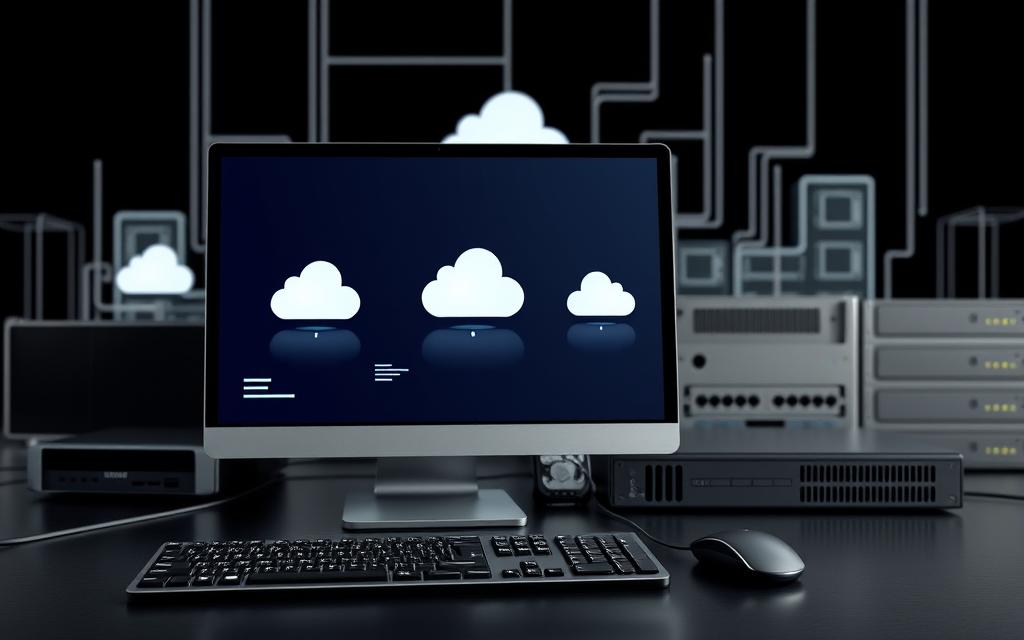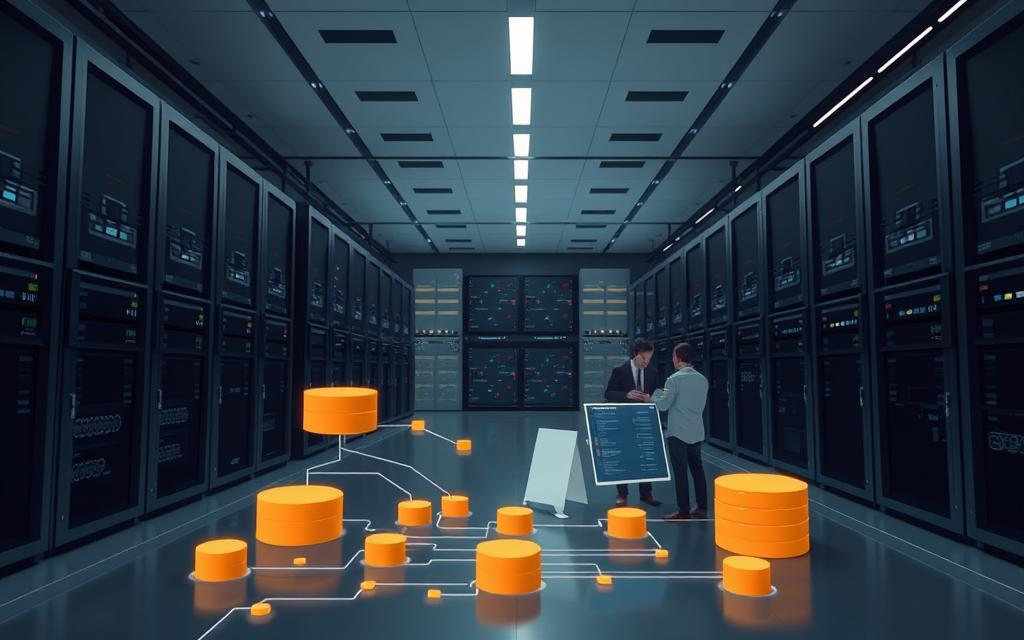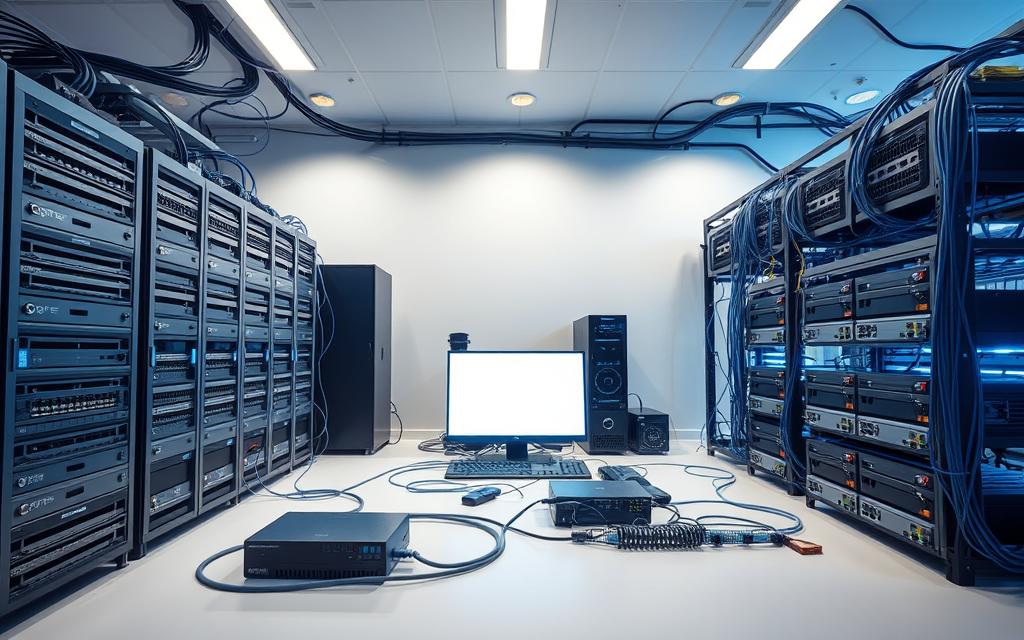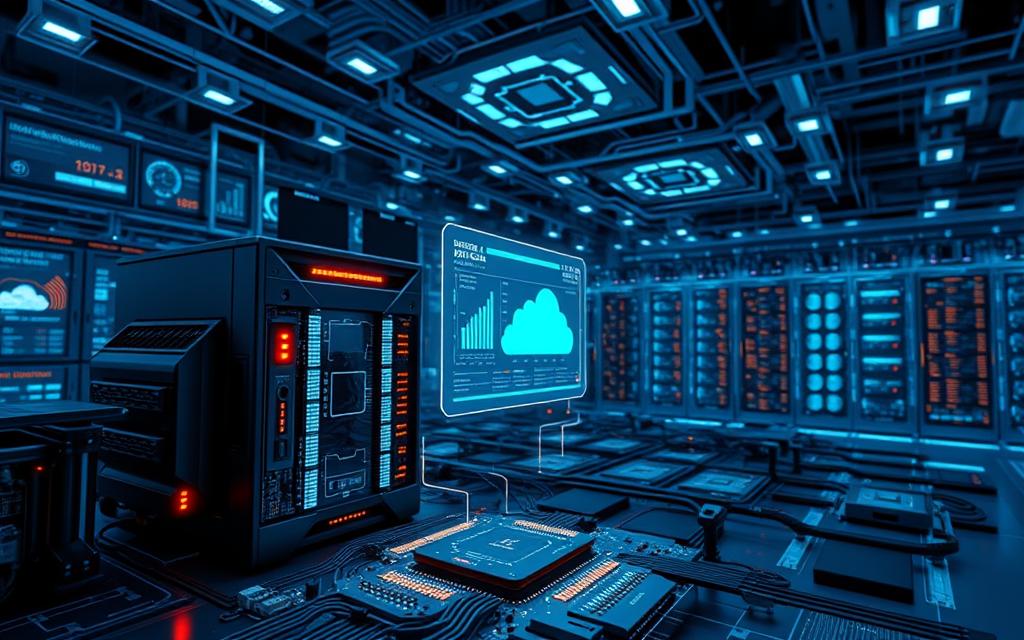In today’s technology-driven business environment, information systems play a crucial role in helping organisations achieve their goals.
Computer-Based Information Systems (CBIS) are designed to collect, process, store, and distribute data to support business operations, management, and decision-making processes.
By combining people, hardware, software, and data effectively, CBIS enables organisations to convert raw data into useful information products.
This comprehensive guide will explore the critical components of CBIS and how they work together as an integrated system to drive business efficiency.
Effective information systems are essential for organisations looking to leverage technology for competitive advantage.
Understanding Computer Based Information Systems
Understanding Computer Based Information Systems is crucial for grasping how businesses leverage technology to drive efficiency and innovation. At its core, a CBIS is designed to process and manage data, transforming it into valuable information that supports business decisions.
Definition and Purpose of CBIS
A Computer Based Information System is essentially a framework that enables organizations to collect, process, and disseminate information. The primary purpose of a CBIS is to take raw, unorganized data and turn it into useful information that can be used to make informed decisions. For example, sales data collected from various departments or customer interactions can be analyzed to produce reports that help managers make strategic decisions about inventory, pricing, or marketing strategies.
Evolution of Information Systems in Business
The evolution of information systems in business has been significant, progressing from simple data processing systems in the 1950s to today’s sophisticated integrated enterprise solutions. Key milestones include the emergence of Management Information Systems (MIS) in the 1970s and 1980s, the introduction of personal computers in the 1980s, and the development of Enterprise Resource Planning (ERP) systems in the 1990s. Today, business information systems incorporate advanced technologies like cloud computing, artificial intelligence, and big data analytics, reflecting their growing strategic importance in business.
What is Computer Based Information System and Its Components
To understand a CBIS, it’s essential to examine its constituent parts and how they work together to achieve the system’s objectives. A Computer-Based Information System is a complex entity that relies on the harmonious interaction of its various components to function effectively.
Core Definition and Framework
A CBIS is comprised of multiple components, each with a specific role, that collectively enable the system to operate efficiently. These components can be broadly categorized into technology, people, and processes. The technology component includes hardware, software, and database systems, which form the technical foundation of the CBIS. The people component involves users and technical developers who interact with the system, while the process component defines how the system operates to achieve business objectives.
The framework of a CBIS is designed to facilitate the transformation of data into meaningful information. This is achieved through the coordinated effort of its various components, ensuring that the system delivers value to the organization.
How CBIS Transforms Data into Information
A CBIS transforms data into information through a process of collection, storage, processing, and retrieval. The system’s database management capabilities play a crucial role in this process, ensuring that data is stored, retrieved, and maintained efficiently. The CBIS also employs various technologies, such as hardware and software, to process and analyze data, generating meaningful insights that support business decision-making.

The Interrelationship Between Components
The effectiveness of a CBIS depends on the harmonious interaction between all its components. The interrelationship between these components is critical, as each element supports and enhances the others. For instance, hardware and software components must be compatible and properly configured to work together, forming the technical foundation of the system.
| Component | Role | Interrelationship |
|---|---|---|
| Hardware | Provides technical foundation | Works with software to enable system functionality |
| Software | Enables data processing and analysis | Relies on hardware for operation |
| Database Management | Manages data storage and retrieval | Interacts with hardware and software to ensure efficient data management |
The interdependence of CBIS components highlights the need for a balanced approach to system development and implementation. By recognizing the importance of each component and their collective role in delivering value to the organization, system designers can create effective CBIS that meet specific organizational goals.
Hardware Components of CBIS
The performance of a CBIS is directly related to the sophistication and efficiency of its hardware components. These components are vital for the system’s ability to process, store, and manage data effectively.
Physical Computing Devices
Physical computing devices, such as computer chips, motherboards, and internal memory chips, are essential for the operation of a CBIS. These devices, often housed within a computer case, are not typically visible from the outside but are crucial for the system’s functionality.
Input and Output Devices
Input devices, such as keyboards and mice, allow users to interact with the CBIS, while output devices, like monitors and printers, display or produce the results of processed data. The efficiency of these devices significantly impacts the overall performance of the information system.
Storage and Processing Hardware
Storage and processing hardware components are critical for determining the performance capabilities and capacity of a CBIS. Primary storage (RAM) provides high-speed access to data and instructions for the CPU, while secondary storage devices like HDDs, SSDs, and NAS offer persistent data storage.
| Hardware Component | Function | Examples |
|---|---|---|
| Primary Storage | Temporary, high-speed access to data and instructions | RAM |
| Secondary Storage | Persistent data storage | HDDs, SSDs, NAS |
| Processing Hardware | Executes computational tasks | CPUs, GPUs |
As noted by experts, “The balance between processing power and storage capacity must be carefully considered during system design to avoid bottlenecks that could impair system performance.” Advances in storage technology, such as in-memory databases, are enhancing data processing capabilities.
Software Components of CBIS
Software plays a vital role in the operation of CBIS, enabling the efficient management of information. The software components are the backbone of CBIS, facilitating the processing, storage, and retrieval of data.

Operating System Software
Operating System (OS) software is fundamental to CBIS, as it manages computer hardware resources and provides a platform for running application software. Examples include Windows, macOS, and Linux. The OS controls the allocation of system resources such as memory, CPU time, and storage. Effective OS software ensures the smooth operation of CBIS by providing essential services like process management and file systems.
Application Software
Application software is designed to perform specific tasks within CBIS, catering to various organizational needs. This category includes office suites, web browsers, and specialized business applications like ERP and CRM systems. Application software enables users to interact with the system, input data, and retrieve information. As noted by experts, “The choice of application software significantly impacts the efficiency and productivity of an organization’s information systems.”
Database Management Systems
Database Management Systems (DBMS) are specialized software that organize, store, retrieve, and manage data within CBIS. DBMS like Oracle, MySQL, and MongoDB provide critical functions including data storage, retrieval, updating, and administration of database structures and access controls. According to a recent study, “DBMS software is indispensable for ensuring data integrity and security in modern information systems.”
Data as a Critical Component
Data is the backbone of any information system, serving as the raw material from which valuable insights are derived. Organisations collect various types of data, process it, and utilise it to make informed decisions.
Types of Data in Information Systems
Information systems handle diverse data types, including transactional data, customer information, and operational metrics. Effective management of these data types is crucial for generating meaningful information that supports business operations.
Data Collection and Organisation
The process of data collection and organisation is fundamental to the functioning of information systems. It involves gathering data from various sources, validating it to ensure accuracy, and organising it in a structured manner. This data is then stored in databases, making it accessible for analysis and decision-making.
From Raw Data to Meaningful Information
The transformation of raw data into information is a key function of computer-based systems. This process involves several stages, including data cleaning, analytical processing, and visualisation. The resulting information provides knowledge that aids in strategic planning and problem-solving.
| Stage | Description | Outcome |
|---|---|---|
| Data Collection | Gathering data from various sources | Raw Data |
| Data Validation | Ensuring data accuracy and quality | Validated Data |
| Data Analysis | Applying analytical methods to data | Meaningful Information |
Network Communication Components
The ability of computer devices to connect to networks and other devices is a fundamental characteristic of contemporary information systems. This interconnectivity is facilitated by various network communication components that enable the efficient exchange of data between different parts of the system.
Networking Infrastructure
Networking infrastructure refers to the hardware and software components that enable network communication. This includes routers, switches, modems, and network interface cards, which form the backbone of any network. A well-designed networking infrastructure is crucial for maintaining the integrity and performance of computer-based information systems.

Communication Protocols
Communication protocols are the rules and standards that govern data exchange between devices on a network. Protocols such as TCP/IP, HTTP, and FTP enable devices from different manufacturers to communicate with each other seamlessly. These protocols ensure that data is transmitted reliably and efficiently across the network.
Data Transmission and Security
Data transmission and security are critical aspects of network communication in computer-based information systems. To protect business information as it moves between system components, various security measures are employed. These include encryption technologies like SSL/TLS and IPsec, authentication mechanisms, and secure transmission protocols such as HTTPS and SFTP. Additionally, network segmentation, intrusion detection and prevention systems, and data loss prevention technologies help safeguard against potential security threats.
- Encryption technologies protect data during transmission by converting it into coded formats.
- Authentication mechanisms verify the identity of users and devices attempting to connect to the network.
- Secure transmission protocols establish protected channels for data exchange.
By implementing these security measures, organisations can ensure the confidentiality, integrity, and availability of their data within the system, maintaining a secure environment for their information systems to operate.
The Human Element in CBIS
The human element is essential to the functioning of CBIS, as it brings together technical expertise, business acumen, and operational management. This diverse range of skills and knowledge is vital for the effective implementation, management, and maintenance of information systems.
Users and Technical Developers
Users and technical developers form the core of the human element in CBIS. Technical developers design, develop, and implement the system, while end-users interact with the system to perform various tasks. Effective communication between these two groups is crucial to ensure that the system meets the needs of the organisation.
Business Professionals and Managers
Business professionals and managers play a vital role in ensuring that CBIS aligns with the organisation’s goals and objectives. They provide input on the system’s functionality and ensure that it meets the needs of the business. Their knowledge of business processes and operations is essential for the successful implementation of CBIS.
IT Support and Specialists
IT support personnel and specialists are responsible for ensuring the smooth operation of CBIS. They include network analysts, database administrators, and help-desk support staff. These individuals provide critical support to end-users, manage system updates, and implement security measures to protect the system from cyber threats.

Process Components and Business Integration
Organizational success heavily relies on the seamless integration of computer-based information systems (CBIS) with business activities. This integration is crucial for enhancing operational efficiency, improving decision-making, and driving business growth.
Business Processes and Workflows
Business processes and workflows are the backbone of any organization. CBIS helps in streamlining these processes, making them more efficient and less prone to errors. By leveraging technologies such as business process management and workflow automation, organizations can significantly improve their operational management.
Process Improvement Through CBIS
CBIS enables organizations to analyze and improve their business processes continuously. Techniques such as business process reengineering and enterprise resource planning allow companies to optimize their operations, reduce costs, and enhance customer satisfaction. By integrating CBIS with business processes, organizations can achieve greater agility and responsiveness to market changes.
Integration with Organisational Goals
The alignment of CBIS with organizational goals is essential to ensure that technology investments support strategic objectives. This alignment involves clear articulation of business goals, identification of information requirements, and the use of frameworks such as balanced scorecard approaches and enterprise architecture. By doing so, organizations can ensure that their CBIS implementations contribute effectively to achieving their strategic goals.

- Strategic alignment begins with clear articulation of business goals and the identification of information requirements needed to achieve those goals.
- Governance structures establish decision-making processes for CBIS investments, ensuring they support organizational priorities.
- Performance measurement systems track how effectively CBIS implementations contribute to organizational goals through defined key performance indicators (KPIs).
Conclusion: The Future of Computer Based Information Systems
Emerging technologies are poised to revolutionize the field of computer-based information systems (CBIS), enhancing their capabilities and applications. As we move forward, CBIS will be shaped by advancements in areas such as artificial intelligence (AI), machine learning, the Internet of Things (IoT), edge computing, blockchain technology, quantum computing, and augmented and virtual reality interfaces.
Transformative Technologies: The integration of AI and machine learning will automate complex decision-making processes, transforming CBIS into active participants in business operations. The IoT will significantly increase the volume and variety of data available, creating both opportunities and challenges for information management.
Edge computing will enable real-time analysis and response by distributing processing capabilities closer to data sources. Meanwhile, blockchain technology will enhance trust in distributed information systems, particularly for applications involving multiple external partners. Quantum computing holds the potential to solve complex problems currently beyond our reach, opening new frontiers in data analysis and system optimization.
As CBIS becomes more sophisticated, organizations will need to address growing concerns about data privacy, algorithmic bias, and the ethical use of information. The successful CBIS of tomorrow will need to balance technological capabilities with human needs, creating systems that augment human intelligence rather than replacing it.
Organizations that view CBIS strategically and invest in developing both technological infrastructure and human capabilities will be best positioned to thrive in an increasingly data-driven business environment. By embracing these emerging technologies and addressing the associated challenges, businesses can harness the full potential of CBIS to drive growth, improve decision-making, and achieve their goals today.










